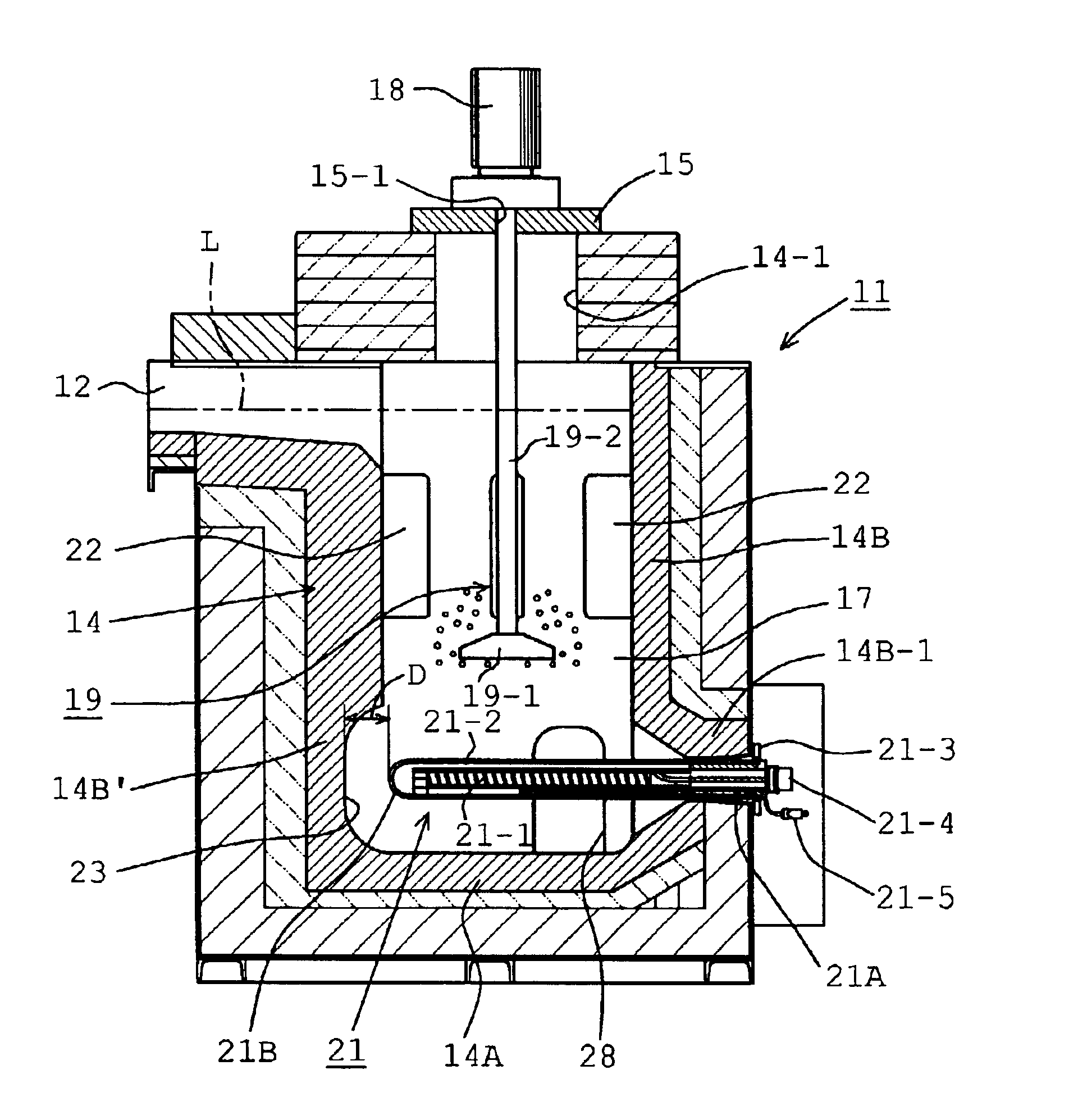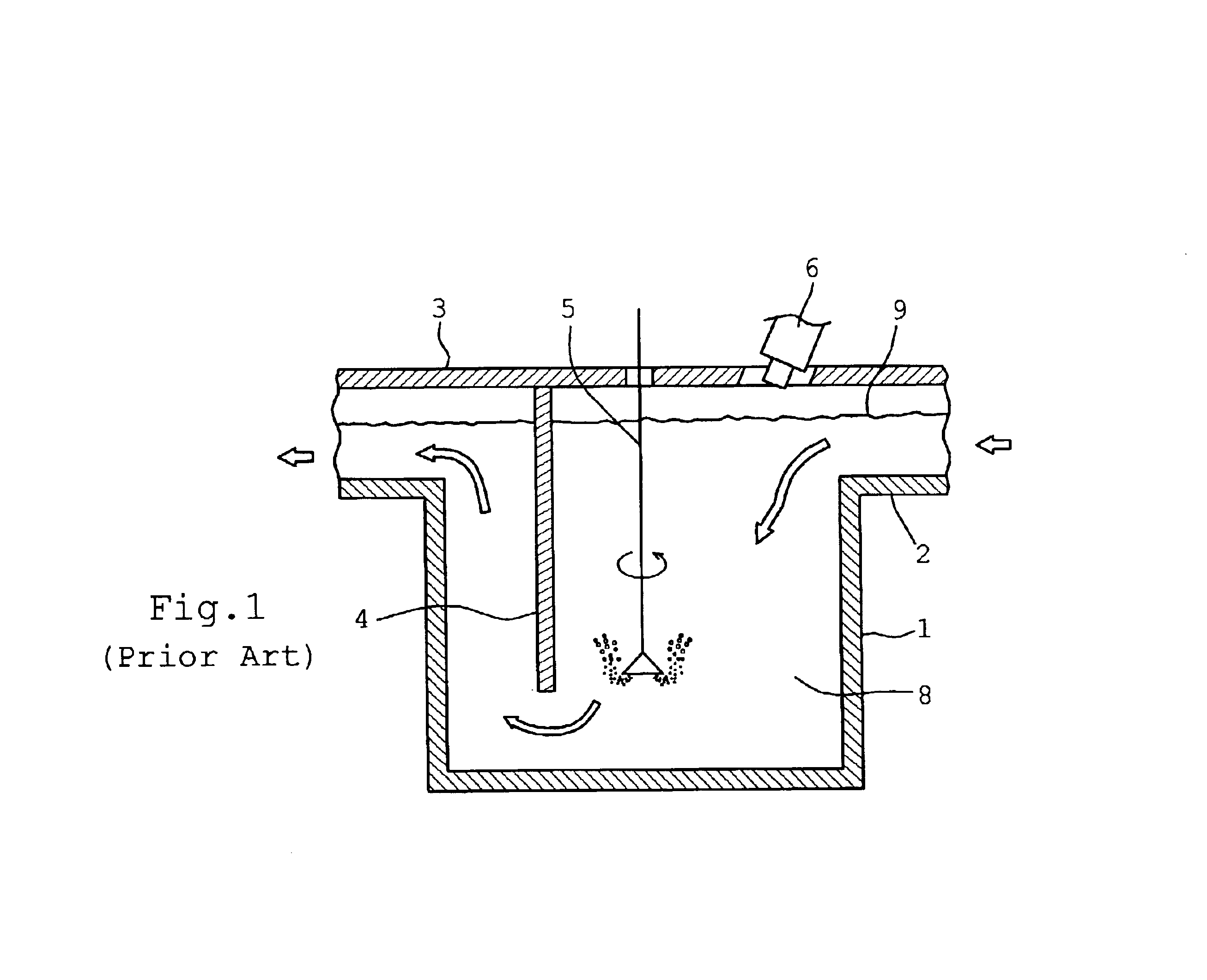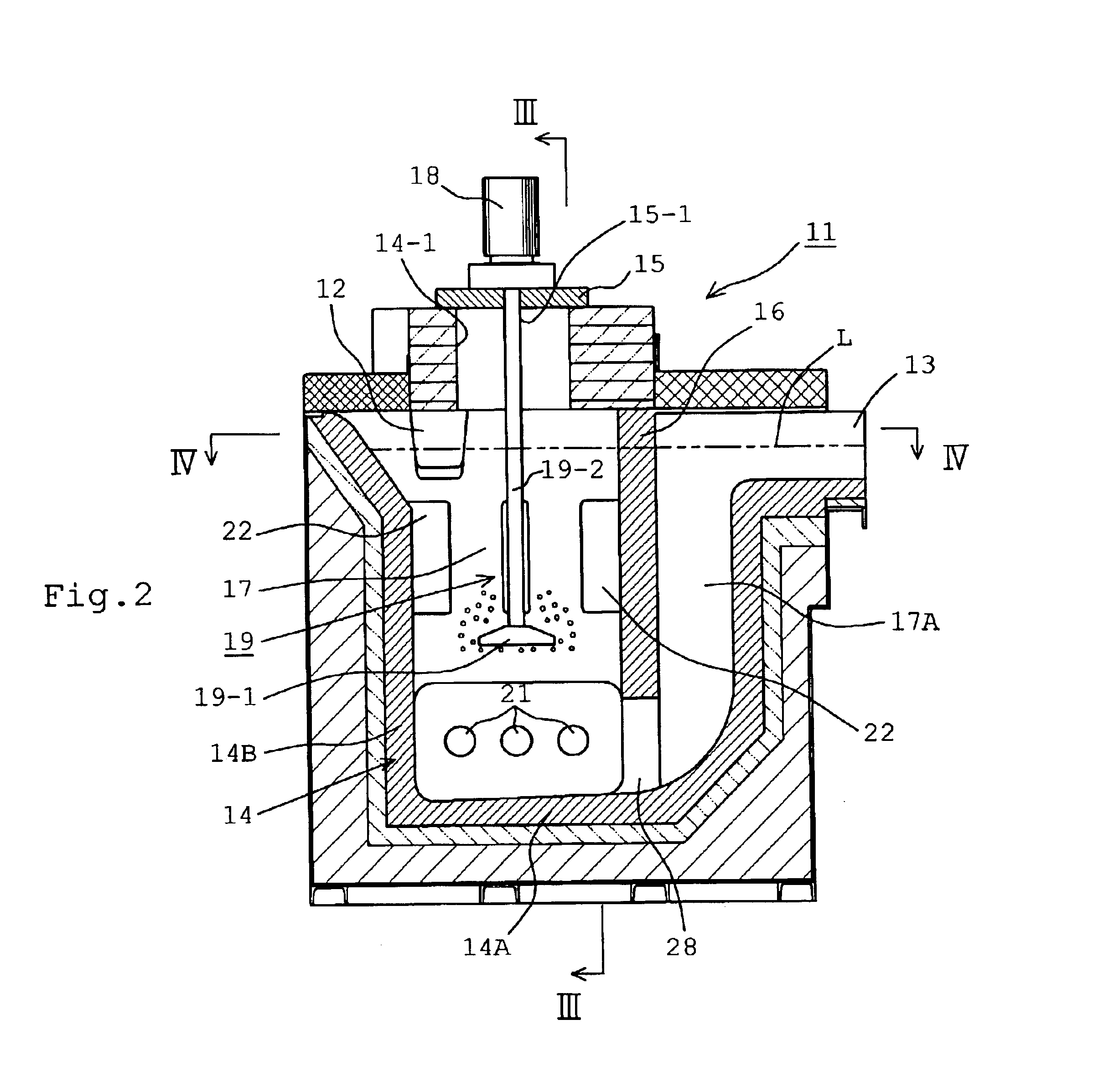Inline degassing apparatus
a degassing apparatus and degassing technology, which is applied in the direction of immersion heating arrangements, furnaces, charge manipulation, etc., can solve the problems of generating various defects in the product, unable to maintain the desired casting temperature, and only achieving high quality after processing or working, so as to reduce the stress of the heater(s) located in the flow of molten metal in the container, reduce the possibility of damage, and increase the service life of the heater(s)
- Summary
- Abstract
- Description
- Claims
- Application Information
AI Technical Summary
Benefits of technology
Problems solved by technology
Method used
Image
Examples
Embodiment Construction
[0031]In FIGS. 2 to 4, a reference numeral 11 denotes a inline degassing apparatus 11, which includes a degassing container 14 having the inlet 12 receiving molten metal continuously flowing from the preceding process and the outlet 13 discharging molten metal to the following process after the completion of the degassing to the subsequent process. The container 14 includes an upper opening 14-1, which is covered by a lid 15. The container 14 is further provided with a partition wall 16, which is located under the lid 15. The partition wall 16 extends vertically downwardly, so that a space inside the container 14 is divided into an upstream chamber (degassing chamber) 17, to which the inlet 12 is opened and a downstream chamber 17A, to which the outlet 13 is opened. The partition wall 16 extends to a position spaced from a bottom wall 14A of the container 14, so that a relatively narrowed passageway 28 is created for connecting the chambers 17 and 17A with each other.
[0032]A referen...
PUM
| Property | Measurement | Unit |
|---|---|---|
| diameter | aaaaa | aaaaa |
| distance | aaaaa | aaaaa |
| temperature | aaaaa | aaaaa |
Abstract
Description
Claims
Application Information
 Login to View More
Login to View More - R&D
- Intellectual Property
- Life Sciences
- Materials
- Tech Scout
- Unparalleled Data Quality
- Higher Quality Content
- 60% Fewer Hallucinations
Browse by: Latest US Patents, China's latest patents, Technical Efficacy Thesaurus, Application Domain, Technology Topic, Popular Technical Reports.
© 2025 PatSnap. All rights reserved.Legal|Privacy policy|Modern Slavery Act Transparency Statement|Sitemap|About US| Contact US: help@patsnap.com



